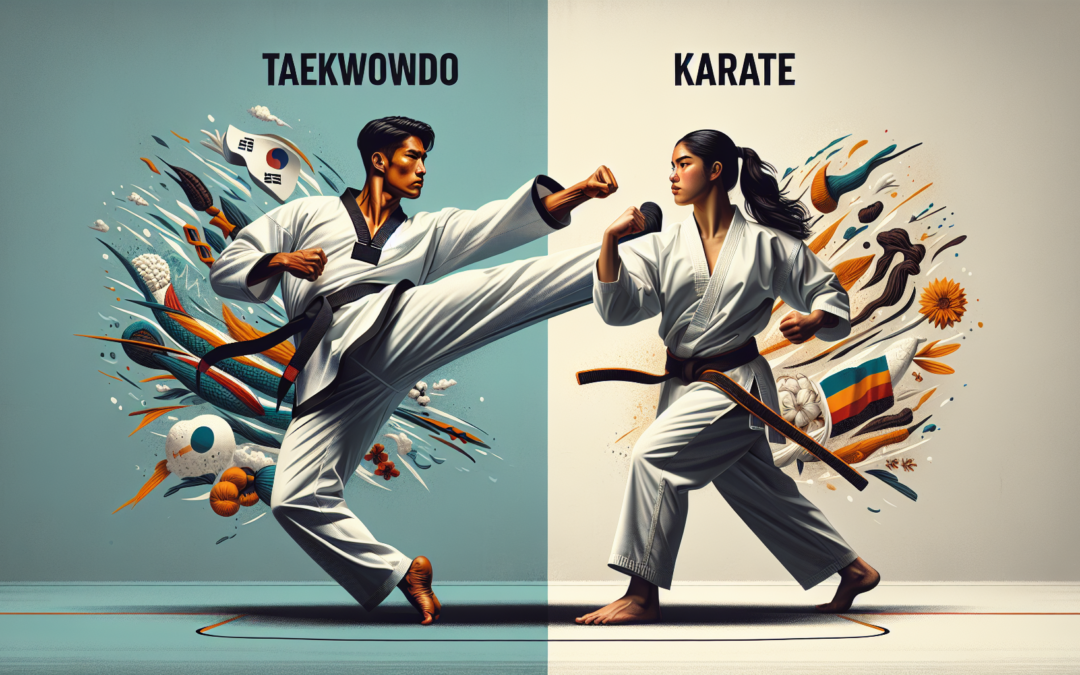In the world of martial arts, two disciplines stand tall in both legacy and allure: Taekwondo and Karate. Yet, behind their similarities lies a universe of distinctive philosophies, techniques, and cultural origins. Immersing yourself in these differences isn’t just about choosing a path, but embracing a journey towards self-discovery, discipline, and unparalleled strength. At Taekwondo Academy, our exploration into the Taekwondo vs Karate differences illuminates the intricacies that could transform your martial arts journey into a life-altering experience, tapping into ancient traditions to empower your present and shape your future.
Understanding Taekwondo vs Karate: Embrace Your Path
When delving into the world of traditional martial arts, you might find yourself torn between Taekwondo and Karate, two vigorously dynamic disciplines that captivate millions worldwide. Here’s an in-depth exploration intended for those in Cherry Hill, New Jersey, attempting to navigate this enticing realm. This insight will provide clarity if you’re deciding which path best matches your aspirations in personal growth and self-defense.
The Origins and Philosophies
Taekwondo: A Korean Mastery
Taekwondo is a modern martial art with the essence of ancient Korean traditions woven within its fabric. Established in the 20th century, it was fundamentally developed as a self-defense art. Its teachings are deeply rooted in values such as courtesy, integrity, perseverance, self-control, and an indomitable spirit. This can be clearly visualized in its focus on high-energy, flamboyant kicking techniques designed to emphasize fast-paced agility.
Karate: The Japanese Way
Karate, with its origins traced back to Okinawa, Japan, emerged in the 19th century. Drawing from local and Chinese influences, Karate is a blend of adaptable and practical techniques, channels of mind and spirit, grace, and strength. Its rich traditions encourage personal improvement through mastery of body and mind synchronization, embellishing principles like respect, dedication, and lifelong learning.
Technical Differences
Kinetic Motion
One of the most noticeable Taekwondo vs Karate differences lies in their execution techniques. Taekwondo is recognized for its dynamic combination of fast kicks and standing spin kicks. Often, students are drawn to its flashy high kicks which highlight flexibility and velocity. Conversely, Karate employs straightforward punches, elbows, and knee strikes. It’s partly wrist tactics and linear movement focus that best encapsulate Karate’s utility and practicality in defense scenarios.
Pattern and Form
Katas in Karate, against the Poomsae of Taekwondo, show varying patterns. Katas string a sequence of counter-attacks and defensive forms evolving from ancient combat techniques. Poomsaes translate ancient techniques into aesthetically fluid forms, using open space and elevation for leverage. Discover how each pattern speaks its own language through motion at Taekwondo Academy on Facebook.
Equipment and Attire
Taekwondo Uniform
The Taekwondo “dobok” represents simplicity with a distinct V-neck top and notably colored belts, identified as symbols of rank and proficiency across tiers. Emblems and motifs often narrate captivating chapters of regional symbolization and soul.
Karate Outfit
Karate enthusiasts embrace a traditional “gi,” with open jacket designs tied at the waist. Belts lashed around not only signify their rank but enter a dialogue steeped into the very source of their practice. Often, crisp white permits distinction in collective interactions or training sessions.
Sparring Methods
Competition Dynamics
In practice or tournaments, Taekwondo matches primarily underscore a scoring protocol attached to executing spectacular kicks poised at head height. The mesmerizing sequences rendered coupled with Taekwondo’s light, speed-forward philosophy propels the art into visual choreography distinctive in appearance.
Through varying spar forms, Karate strains upon a more kinetic contact, obliging accuracy and alignment whilst intercepting or embarking tactics. This unwavering approach in controlled yet intrinsic precision resonates with its practitioner’s formidable objectives.
Benefits and Mindset Development
Health and Wellness
Both Taekwondo and Karate furnish comprehensive health allurements. Cardio conditioning blended with physical resilience-driven patterns bolsters cardiovascular fortitude. Emotional and mental tranquility finds atonement through catalytic endorphin surges lifting stress, uplifting spirit, and replenishing peace.
Cognitive Potential
Beyond physical advance, these arts vehemently encapsulate mind, transitioning abstract conceptual objectives into constructive manifestation using dedicated practice and reflection. Akin to methodology spiritual alongside physical boundaries fosters unprecedented inner connectivity.
Find inspiration visually portrayed on our Instagram profile eloquently defining elevated expressions localized within this narrative quest embracing personal fruition.
Final Considerations: Finding Your Martial Arts Sanctuary
Whether Taekwondo’s fluid mobility or Karate’s precise force resonates, opportunities abound in Cherry Hill, New Jersey, for exploration. Taekwondo Academy believes selecting a discipline hinges on where you envision growth: lifting limits through grace or reinforcing wellbeing and self-discipline ventures forth.
Both paths transcend the tangible into realms sympathy animates tradition into vibrant destiny prompting courage conceived within martial commitment. Ultimately immerse your heart where passion takes flight, unravel the martial art unveiling your upheld spirit.
Step forth—levitate amongst cherished dreams curls ablaze beneath your embrace—each kick, each carving delivered under quintessence engrossed unto life anew fortifies what words may allen wager mānā campaign criou apresenta continua!

